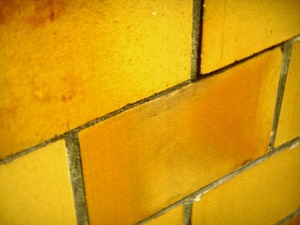Tricks to Improve your Child’s Handwriting
One of the major reasons that children have issues with handwriting is that they don’t get enough practice developing fine motor skills. This may be one of the reasons that girls tend to have better handwriting than boys, since activities like arts and crafts and sewing develop the hand muscles and coordination. It is also one of the reasons that many left handed students have handwriting issues, since many lefties write with their left hand but do other tasks with their right.
So the first thing to do is set a routine of fine motor skill exercises, these can be interspersed with actual pencil to paper handwriting exercises, and can also be done at other convenient times (commercial breaks while watching TV or in the car stuck in traffic).Make sure that all of these exercises are done only with the hand used for writing:
-Crumple paper
– Sewing cards (you can make them yourself out of stiff cardboard if you don’t want to pay for them or want more “boy themed” ones),
-Stringing beads
-Stacking tiddlywinks or coins
-Playing Jenga, pick up sticks, and jacks (just make sure they don’t get caught up in the game and begin to use their other hand)
-Separating Legos and then putting them back together (this is trickier than it sounds when using only one hand)
– One of the best activities for developing finger strength –which isn’t so car friendly– is to make small (½ inch) balls of Play-doh or clay and place them between the child’s fingers. Have the child try to squish all of the balls flat by pushing their fingers together.
-Some more raucous activities include good old-fashioned thumb wrestling, tossing a beanbag, and for younger kids using a squirt gun outside to make letter shapes.
Then comes the writing. Like the fine motor skill exercises, practice works much better when it is regular than when it is sporadic. Usually one letter a day is a good system. You can use a handwriting book or just lined paper. Have the child write the letter 15-20 times. Remember that quality is more important than quantity. Keep an eye on him or her to make sure that the child is carefully forming the shapes and not just rushing through to get it over with. Then have them write a few words that have that letter.
Watch that the letters and words are spaced out carefully (a popsicle stick is a good as a guide to the desired space between words), the letters are the correct height, and that everything is slanted in the correct direction.
A lot of students with poor handwriting complain that their hand gets tired when they write for too long. This is usually due to a poor grip on the pencil, and is especially prevalent with left-handed students. One solution to this problem is to clip a medium sized black and silver office clip to the pencil. With the silver prongs still up, place the student’s index finger in the black groove at the top of the clip (with the silver prongs serving as barriers) and place the other fingers around the clip in the proper positions.
This can become uncomfortable but is a good way to reinforce proper grip. Also watch the child’s posture as he or she writes. The majority of the momentum should come from the forearm and wrist, not the fingers.
Good luck and happy writing!






